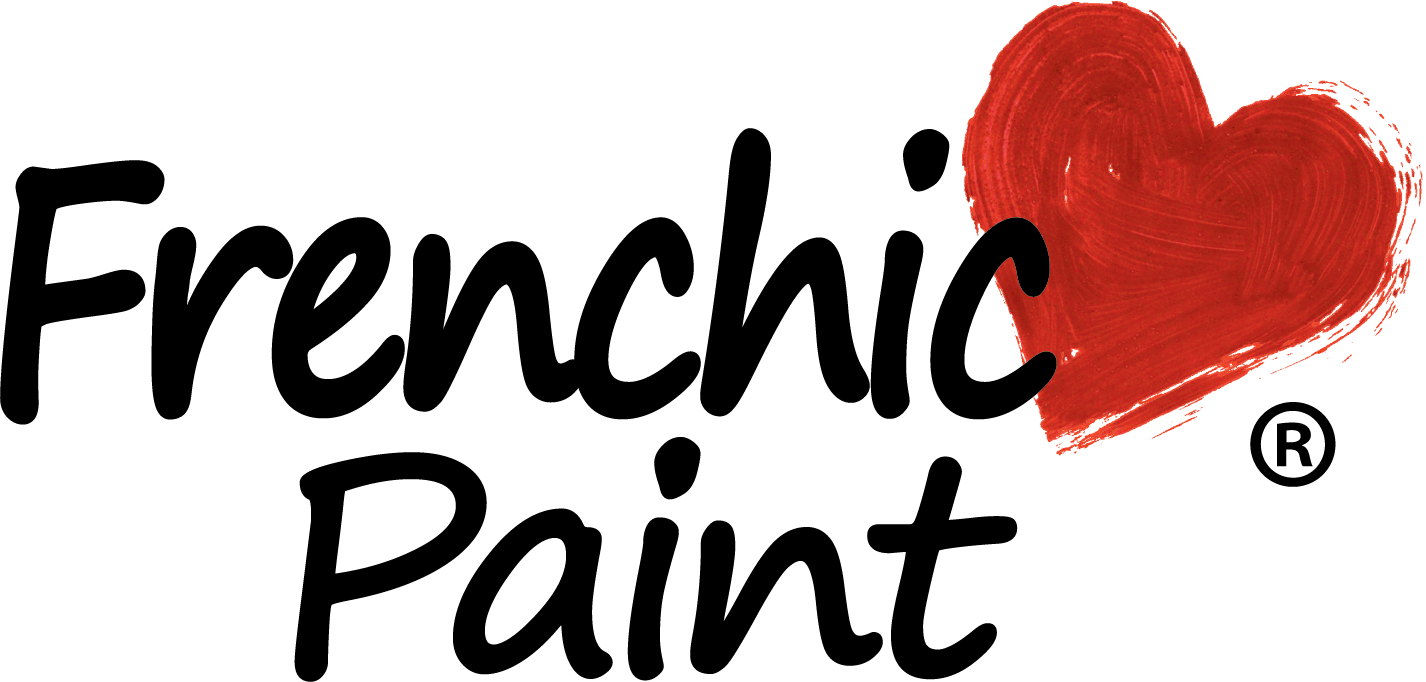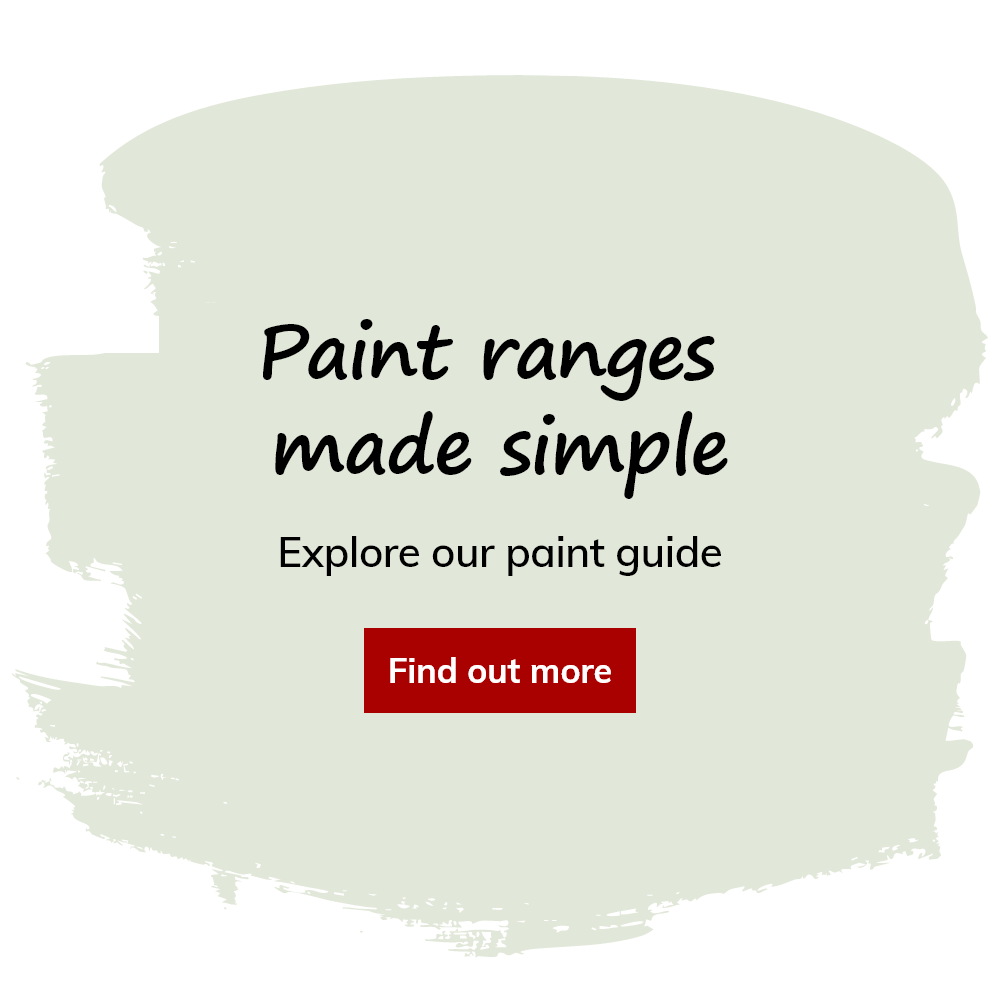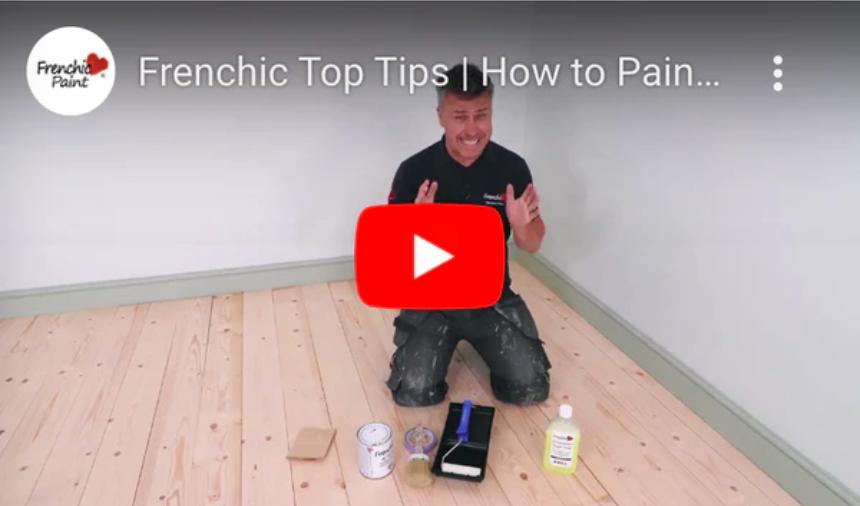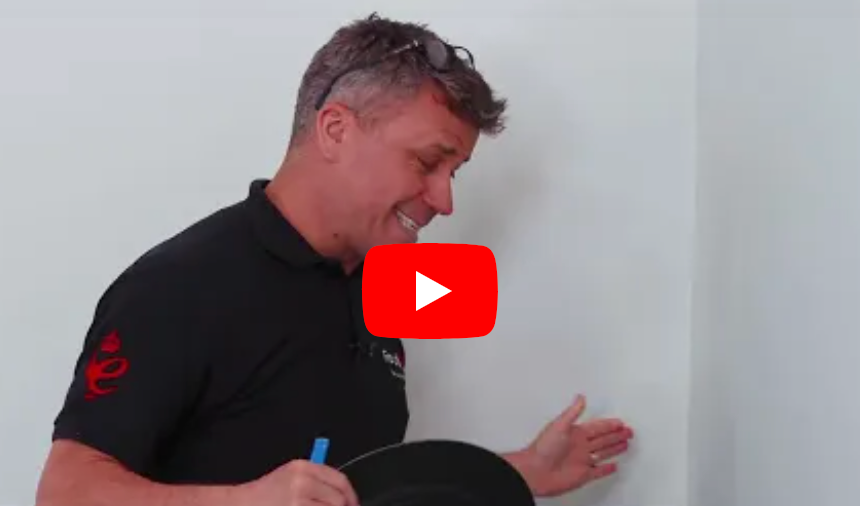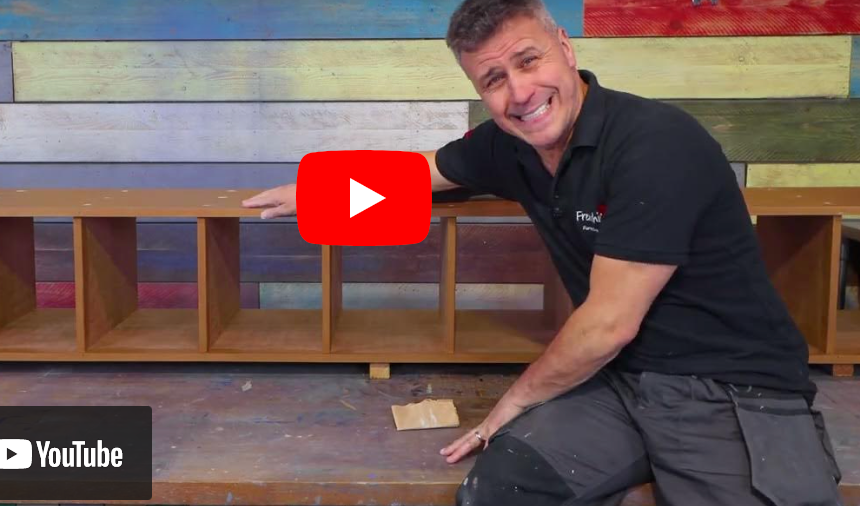How to Paint Wooden Floorboards
Bored of carpet and want to transform your room in a quick and affordable way? Why not paint your floorboards!
Going back to basics is a great way to refresh your home’s interiors and give you a relaxed, pared-back vibe that suits so many interior styles. You don’t have to stick to traditional colours either, as our selection of Al Fresco paint matches all types of colour schemes.
In this guide, we’ll discuss how to paint your wooden floorboards, including some tips to make the process simple.
What you’ll need
- Sugar Soap
- Sandpaper
- Dust mask
- Paintbrush
- Roller
- Paint (Craig uses Al Fresco Wise Old Sage)
- Low tack masking tape
Preparing your wooden floorboards
Preparation is key to getting the best finish. So before you do anything, wash the surface with Sugar Soap and hot water to thoroughly clean it, then rinse and dry.
Once the floor is dry, it’s time to sand it. Use light abrasive sandpaper and gently go over the surface. Don’t forget to vacuum the dust afterwards to leave a clean and dust-free area.
If your floorboards have previous oil or wax-based treatments, you’ll have to remove this before painting. Otherwise, you may find the paint doesn’t stick or leaves patchy areas.
When you’ve prepped the floorboards, mask up to your skirting boards if you’re not painting them the same colour.
Painting wooden floorboards
In the video above, Craig paints onto untreated softwood, so the Al Fresco paint is diluted by 10% for the first coat. If you’re painting varnished or previously painted boards then you should not need to thin the paint. Before starting, check what type of wood you’re painting onto first to get the right first coat consistency. Our Al Fresco and Chalk Wall Paint work well on hard and soft wood floors. This gives you a great choice of colours and either a flat or ultra-matte finish, respectively.
Apply the paint with a brush for the edges and a roller for the rest of the floor. If you get a mottled effect, use a large brush to create a smooth finish as you go. When you approach completion of the first coat, remember to give yourself space to get out of the room. There’s nothing worse than having to step through your fresh paint. Leave this to dry for a minimum of four hours before applying the second coat.
Before you return to the room, take your shoes off to avoid any marks or dirt on the surface. As Craig is painting bare wood boards, he uses a P150 grade to take away those courser spots. Finally, vacuum the dust away and wipe it down, and it’s ready for the next coat. If you’re painting varnished or previously painted boards, you are unlikely to need to sand after the first coat.
Following the same process as before, apply the second coat. This application doesn’t require dilution, so you can just paint straight from the tin.
Applying a top coat
In most cases, using Frenchic Al Fresco or Chalk Wall Paint doesn’t require a topcoat as they self-seal. However, if this room is a high-traffic area, you might like to apply two coats of Frenchic Finishing Coat or Tuff Top Coat for extra protection.
Once your topcoat is dry, you can walk on it. But Craig recommends no shoes on the floorboards for the next seven days and to treat it carefully for around three weeks to give it a chance to cure fully.
What’s the best paint for wooden floorboards?
Our Al Fresco and Chalk Wall Paint collections provide plenty of great options when painting your floorboards. Both offer hard-wearing finishes and have self-sealing properties for durability. The choice of colours also matches perfectly with various décor themes, so there’s nothing stopping you getting started!
The Al Fresco range is water-resistant, making it suitable for indoor and outdoor application – and ideal for wooden floorboards with the odd spill. However, we don’t recommend painting bathroom floors that will be subject to standing water.
Our Chalk Wall Paint range lends itself to wooden flooring thanks to its ISO11998 Wet Class 1 Scrub rating. This means paint won’t wear away with regular cleaning, so you can remove dirt, scuffs and other marks from your painted wooden floors. The same advice applies in terms of standing water, but both ranges can be used throughout the rest of your home.
How to choose the best colour for painting wooden floors
Neutrals
Just as with the other decor in a room, like walls or furnishings, neutrals are the most popular colours to paint floors. The likes of cream, greige, grey, brown, black and white can work beautifully for a blended, pared back feel.
If you want to go bold and neutral, take a look at this striking black staircase using Blackjack:
Colours
However, don't dismiss the idea of going for something more colourful. Just like a feature wall, this is a great way to add interest or character to a space and experiment in a budget friendly way.
Check out this lively example by Frenchic Fan Tomtekulla, who used Swanky Pants and Honeycombe for a fun and chic checkerboard pattern.
Light vs dark
In terms of the overall aesthetic, painting your floor a pale colour with light coloured walls will tend to give the impression of more space – especially if the skirting boards are the same colour as the walls.
To add a little drama and elegance, a dark painted floor works well. This can also add a more intimate feeling to larger spaces.
Playing with patterns
Unlike carpet or tiles, painting wooden floors allows you to play with pattern too.
Think checkerboard, stripes, chevrons or even a central 'carpet'. You can let your imagination go wild with different colours as well as leaving areas of the original wood visible.
As well as the checkered example above, there are some excellent transformations using Frenchic paint, stencils and a bit of creativity to create a tile effect:
Will dirt show on my painted floor?
Regular cleaning is all that’s required to keep your painted floor dirt-free. Simply clean it as often as you would for a tiled or carpeted floor.
Providing you have chosen durable, washable paint, that can withstand the rigours of everyday traffic, your painted floors can be cleaned with your vacuum cleaner and will be fine for wiping down too using a mild detergent.
You may be concerned that a painted floor in white or a very pale colour will show up dust more than a carpet. If you are worried about dust or debris being visible, don't be tempted to opt for a very dark colour as they can also show up dust easily too – and also every crumb!
Mid-toned colours are the most forgiving if you’re looking for a low-maintenance option.
Choose your wooden floor paint
If you’re ready to get started with your wooden floor transformations, check out Frenchic’s Chalk Wall Paint and Al Fresco ranges. Find your local stockist for more advice when buying our excellent range of products. And don’t forget to tag us on Instagram with your before and after pictures!

